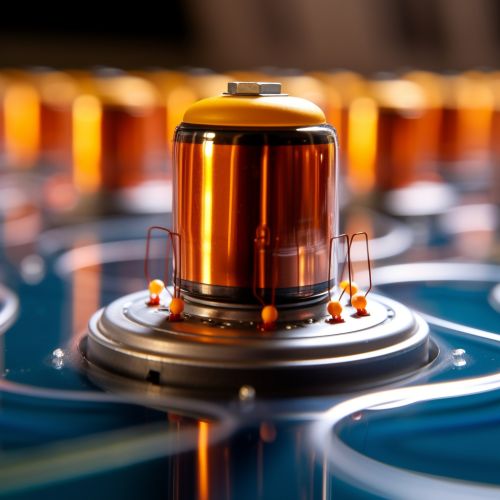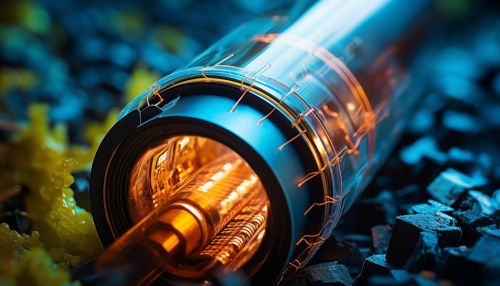Energy Storage in Supercapacitors
Introduction
Energy storage is a critical aspect of modern technology, and supercapacitors have emerged as a promising solution. Supercapacitors, also known as ultracapacitors or electrochemical capacitors, store energy using different mechanisms than traditional capacitors. This allows them to store a significantly larger amount of energy.


Energy Storage Mechanisms
Unlike traditional capacitors, which store energy in an electric field, supercapacitors store energy through the physical separation of electrical charges. This is achieved through one of two mechanisms: electrostatic double-layer capacitance (EDLC) and pseudocapacitance.
Electrostatic Double-Layer Capacitance (EDLC)
In EDLC, energy is stored by the separation of charge in a Helmholtz double layer at the interface between the surface of a conductive electrode and an electrolyte. The energy stored is proportional to the surface area of the electrodes, the square of the applied voltage, and inversely proportional to the distance between the electrodes.
Pseudocapacitance
Pseudocapacitance is a form of capacitance that arises from the electrochemical reactions at the electrode-electrolyte interface. Unlike EDLC, the energy stored in pseudocapacitance is proportional to the applied voltage and the amount of active material in the electrode.
Supercapacitor Construction
Supercapacitors consist of two electrodes, an electrolyte, and a separator. The electrodes are often made of activated carbon, which provides a large surface area for energy storage. The electrolyte is a conductive material that allows for the movement of ions between the electrodes. The separator prevents the electrodes from coming into contact with each other, which could lead to a short circuit.
Performance Characteristics
Supercapacitors have a number of performance characteristics that make them unique among energy storage devices. These include high power density, long cycle life, and the ability to operate at a wide range of temperatures.
High Power Density
Supercapacitors have a high power density, meaning they can deliver or absorb energy at a high rate. This makes them ideal for applications that require rapid energy storage and release, such as regenerative braking in electric vehicles.
Long Cycle Life
Supercapacitors have a long cycle life, with the ability to undergo hundreds of thousands, or even millions, of charge and discharge cycles without significant degradation. This is due to the physical nature of the energy storage mechanism, which does not involve chemical reactions that can degrade the materials over time.
Wide Operating Temperature Range
Supercapacitors can operate over a wide temperature range, making them suitable for use in a variety of environments. They can function at temperatures as low as -40°C and as high as 65°C, although performance may vary depending on the specific design and materials used.
Applications
Supercapacitors have a wide range of applications, from small electronic devices to large industrial machinery. Some of the most common applications include energy storage in electric vehicles, power conditioning in renewable energy systems, and backup power supply in uninterruptible power systems (UPS).
Electric Vehicles
In electric vehicles, supercapacitors can be used to store energy generated during regenerative braking. This energy can then be quickly released to provide a boost of power during acceleration.
Renewable Energy Systems
In renewable energy systems, supercapacitors can be used to smooth out fluctuations in power output. This can help to stabilize the power grid and prevent damage to electrical equipment.
Uninterruptible Power Systems (UPS)
In UPS systems, supercapacitors can provide backup power in the event of a power outage. They can deliver a large amount of power in a short amount of time, allowing critical systems to continue operating until a longer-term power source can be activated.
Future Developments
Research into supercapacitors is ongoing, with the aim of improving their energy density, reducing their cost, and expanding their range of applications. Some areas of focus include the development of new electrode materials, the optimization of electrolyte composition, and the design of novel device architectures.
See Also
Electric double-layer capacitor Electrochemical capacitor Flywheel energy storage Lithium-ion capacitor
